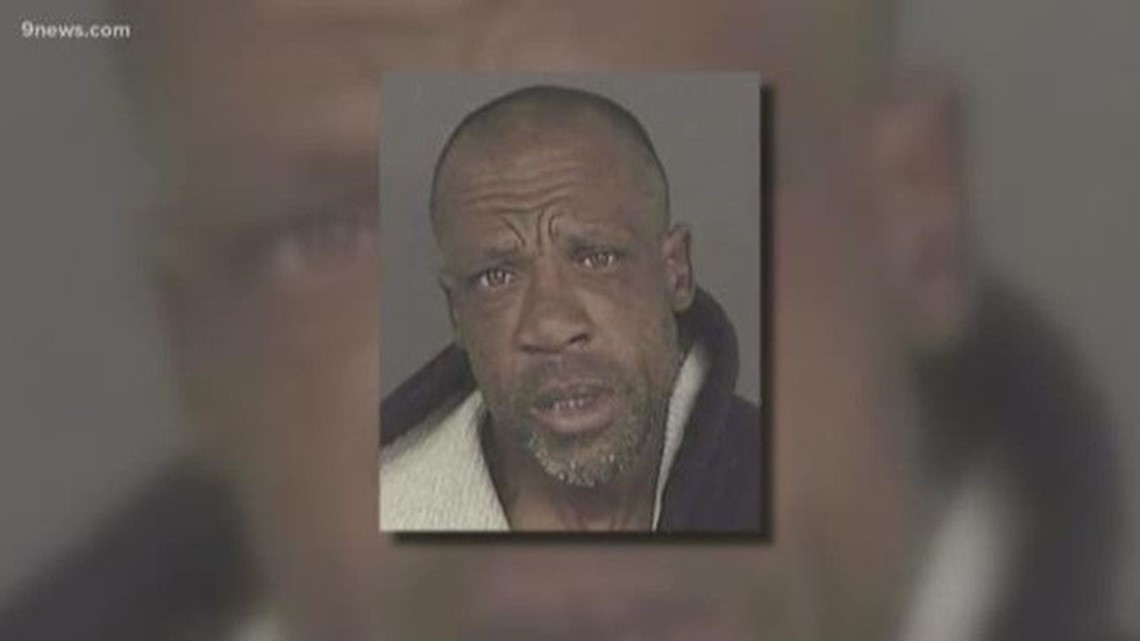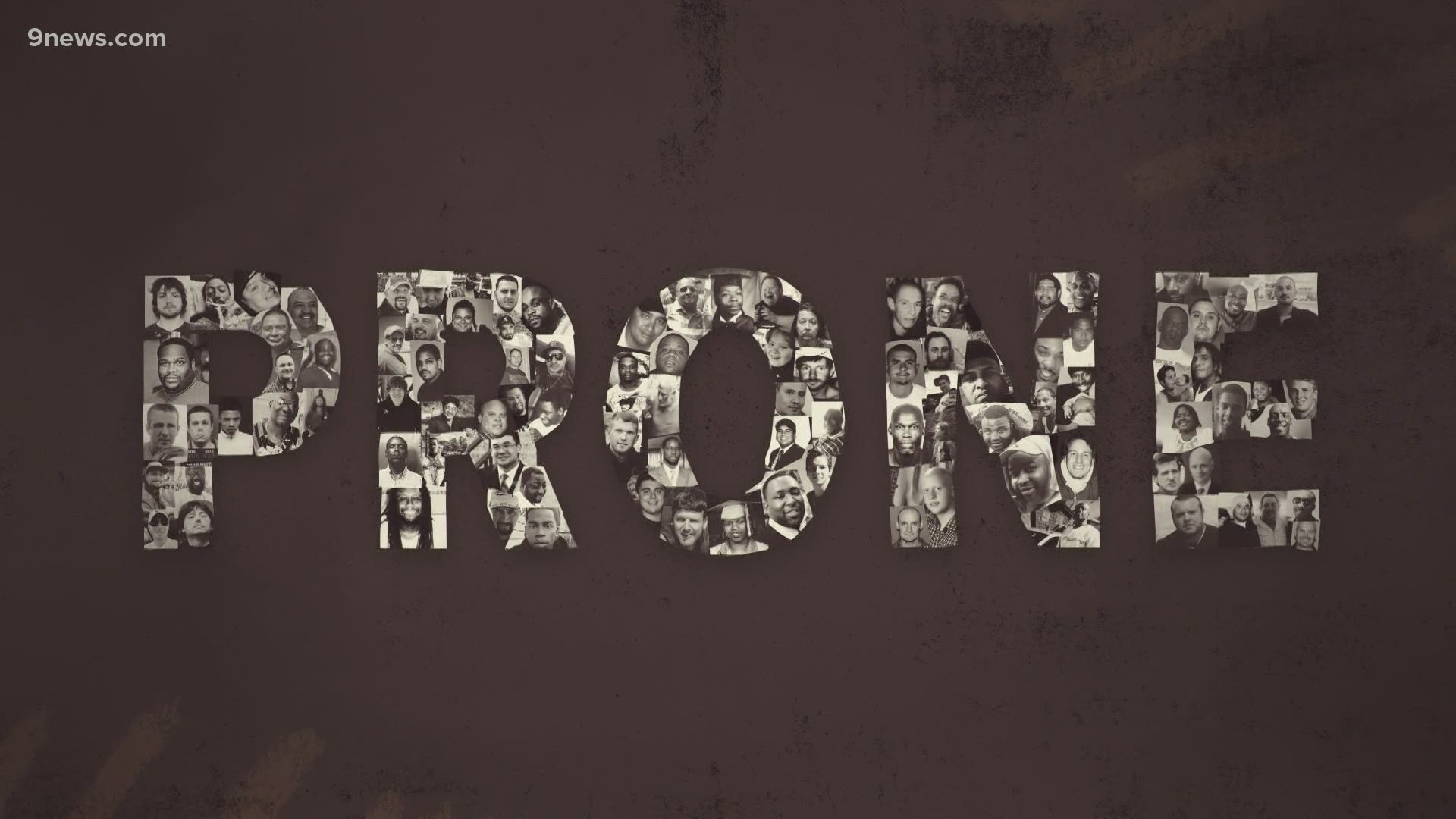DENVER — As the nation contemplates additional police reform measures following the death of George Floyd and the conviction of former Minneapolis Officer Derek Chauvin, little is being done to address the one thing that killed Floyd in the first place, according to an ongoing 9Wants to Know investigation.
As expert after expert testified in the Chauvin trial in Minneapolis, prone restraint led to the death of Floyd on May 25, 2020.
Yet not even the Congressional “George Floyd Justice in Policing Act,” which passed in the U.S. House of Representatives earlier this year, addresses the use of prolonged prone restraint.
RELATED: PRONE: Doctor tells jury in Derek Chauvin trial previous studies on deaths are 'highly misleading'
RELATED: PRONE: Facedown and handcuffed is no way to die, yet it keeps happening over and over again
9Wants to Know has found at least 119 deaths since 2010 in the U.S. that followed the use of prone restraint. While George Floyd’s death received the most attention, the ongoing PRONE investigation has found plenty of other deaths that deserve additional scrutiny.
Two cities – Denver and Minneapolis – have decided not to wait for potential legislation on prolonged prone restraint. After the first part of PRONE aired in both cities, the two police departments elected to change the way they train their officers.
INTERACTIVE GRAPHIC: Click the photos for the names of people who 9WTK found died of positional asphyxia and more information about each case.
"It’s difficult to watch officers continue to make the same mistake"
The warning arrived in the email inboxes of all badged members of the Denver Sheriff Department on Nov. 2, 2015.
“Once a subject has been restrained, immediately place him/her into a recovery position (lying on his/her side or seated upright,” the training bulletin said.
It added, “Do not put weight on an arrestee’s back, such as with your knee, for a prolonged period.”
Nine days later, at least four Denver deputies ignored that warning as they kept Michael Marshall handcuffed and prone for at least 9 minutes and 12 seconds. Marshall, who weighed 112 pounds at the time, struggled to breathe under the weight of multiple deputies.


“They never got off, I don’t understand why they never got off,” Marshall’s niece Natalia Marshall told 9Wants to Know.
“What they did to him, it just hurts,” Brenda Wright, Marshall’s sister, said. “I just sit there, and you know he’s dying as you watch this video. You see what they do to him, and it just hurts.”
The City and County of Denver eventually settled with the Marshall family for $3 million. Of the 119 deaths on our list, we’ve found more than $126 million in settlements and verdicts.
Seth Stoughton is a former police officer turned law professor at the University of South Carolina. He was one of many experts to testify in the trial of Derek Chauvin, the Minneapolis Police officer now convicted of murdering George Floyd.
Stoughton could not talk about the Floyd case, but he could talk about the continued problem with law enforcement officers not heeding decades of warnings when it comes to the potential dangers of prone restraint.
“Once somebody has been restrained, they should not stay in the prone restraint position,” Stoughton said. “We’re not talking about dramatic changes in officer behavior. We’re talking about turning someone 90 degrees.”
It’s the exact same advice the U.S. Department of Justice sent to law enforcement officers in 1995. That year, the National Law Enforcement Technology Center told officers, “To help minimize the potential for in-custody injury or death, officers should… as soon as a suspect is handcuffed, get him off his stomach.”
When asked about the 119 deaths we had found, Stoughton said, “It’s difficult to watch officers continue to make the same mistake.”
"Once you pass a few seconds, it’s too long"
As part of the PRONE investigation, 9Wants to Know examined dozens of videos – mostly body camera or surveillance footage – to better understand just how long law enforcement officers have remained on the backs of someone prone and handcuffed.
Stoughton said once someone is handcuffed, officers should turn that person over within a “few seconds.”
“Once you pass a few seconds, it’s too long,” said Stoughton.
Many of the deaths looked at as part of this investigation involved times much, much longer than that.
Earlier this year, Jose Albert Lizarraga Garcia died in Indio, California, under the weight of arresting officers. He remained prone and handcuffed, according to a review of body camera footage, for 4 minutes and 13 seconds.
Carlos Ingram Lopez remained prone and handcuffed under the weight of Tucson, Arizona, police officers for 9 minutes and 22 seconds. He died in April of last year. That city settled the case for $2.9 million.
Angel Zapata Hernandez died in 2019 in San Diego, California, and was held prone for 9 minutes and 41 seconds.
Tony Timpa died in Dallas, Texas in 2016. He was held for fourteen minutes and 19 seconds.
Remember, this isn’t just the time spent prone. This is the time spent prone and handcuffed.
In our analysis of these videos few cases rivaled that of the death of John Neville inside a jail in Winston Salem, North Carolina, in 2019.
Neville spent 17 minutes and 22 seconds handcuffed and prone.
The deputies who restrained him for that long are only among a small handful of law enforcement officers to have been criminally charged in the cases reviewed as part of this investigation. Only four other deaths – including the death of George Floyd in Minneapolis – resulted in criminal charges.
When asked about the Neville death, Stoughton called the circumstances surrounding it “absurd.”
“That’s unfathomable,” he said.
The science behind prone restraint
“There’s something medical that’s causing these people to die,” Dr. Alon Steinberg, a California cardiologist said.
Steinberg recently concluded an exhaustive study looking into the possible causes of death following prone restraint.
His conclusion?
“When people are in a prone position there’s a decrease in ventilation and a decrease in cardiac output,” he said.
As the body takes in less oxygen, it purges less carbon dioxide.
The acid levels in the blood rise. High school chemistry class tells you the higher the acid level, the lower the pH. Steinberg said the lower the pH, the higher the risk of complications from acidosis.
Basically, if the pH gets too low, the heart can stop.
“Officers end up keeping them prone for too long and people pass away,” he said.
When asked if this kills more people than chokeholds, Dr. Steinberg did not hesitate. “Oh yeah, oh yeah,” he said.
Yet as state legislators and members of Congress attempt to enact police reform efforts, prone restraint is seldom or even mentioned.
An analysis of data provided by the National Conference of State Legislators suggests it’s become quite common for states to ban chokeholds or carotid holds.
Sixteen states have enacted bans on those neck holds.
But only four states have even attempted to address prolonged prone restraint in some fashion. Only Nevada requires officers to place someone in a “recovery position.”
Earlier this year, Congress passed another version of the “George Floyd Justice in Policing Act.” It bans chokeholds but makes no mention of turning someone over once handcuffed.
Seth Stoughton confessed he has no idea why more law enforcement officers aren’t acutely aware of the risks of prolonged prone restraint.
“I really have felt like we have covered this, like this ship has sailed,” he said.
And yet as the deaths continue, he said he’s grown increasingly frustrated.
“We’re not talking about extending someone’s physical discomfort a bit,” he said. “We’re talking about potentially killing someone,” he said.
Denver Police making changes after 9Wants to Know investigation
Denver Police Chief Paul Pazen isn’t going to wait for someone to tell him how to better train his officers on the potential dangers of prone restraint.
“You’ve got to get them over,” he told 9Wants to Know.
After his training staff saw the PRONE investigation, they decided they should use some of the video in their own training moving forward.
“That is why we came to you to ask permission to use this as part of our training,” Pazen said.
The Denver Police Department has had warnings about prone restraint in its training manuals for years, but Chief Pazen said it will be helpful for his officers to see video of what can happen as well.
“We want to make sure we don’t just have a policy in place and assume that it’s not going to happen here,” he said.
Weeks after KARE-TV in Minneapolis, MN, aired PRONE, the Minneapolis Police Department ordered the entire police force t to undergo additional in-person “Positional Asphyxia Training.”
“This is MANDATORY TRAINING for all Sworn MPD and Park Police Personal,” the internal memo states.
The required two-hour training sessions were scheduled in mid-December and covered MPD Use of Force Policy and Positional Asphyxia.
“I think the news coverage about the dangers of positional asphyxiation and prone restraint were absolutely essential to changing the MPD practice and training around prone restraint,” Minneapolis Police Commissioner Abigail Cerra told KARE-TV reporter A.J. Lagoe.
FULL COVERAGE: Watch all of the stories from the PRONE investigation


